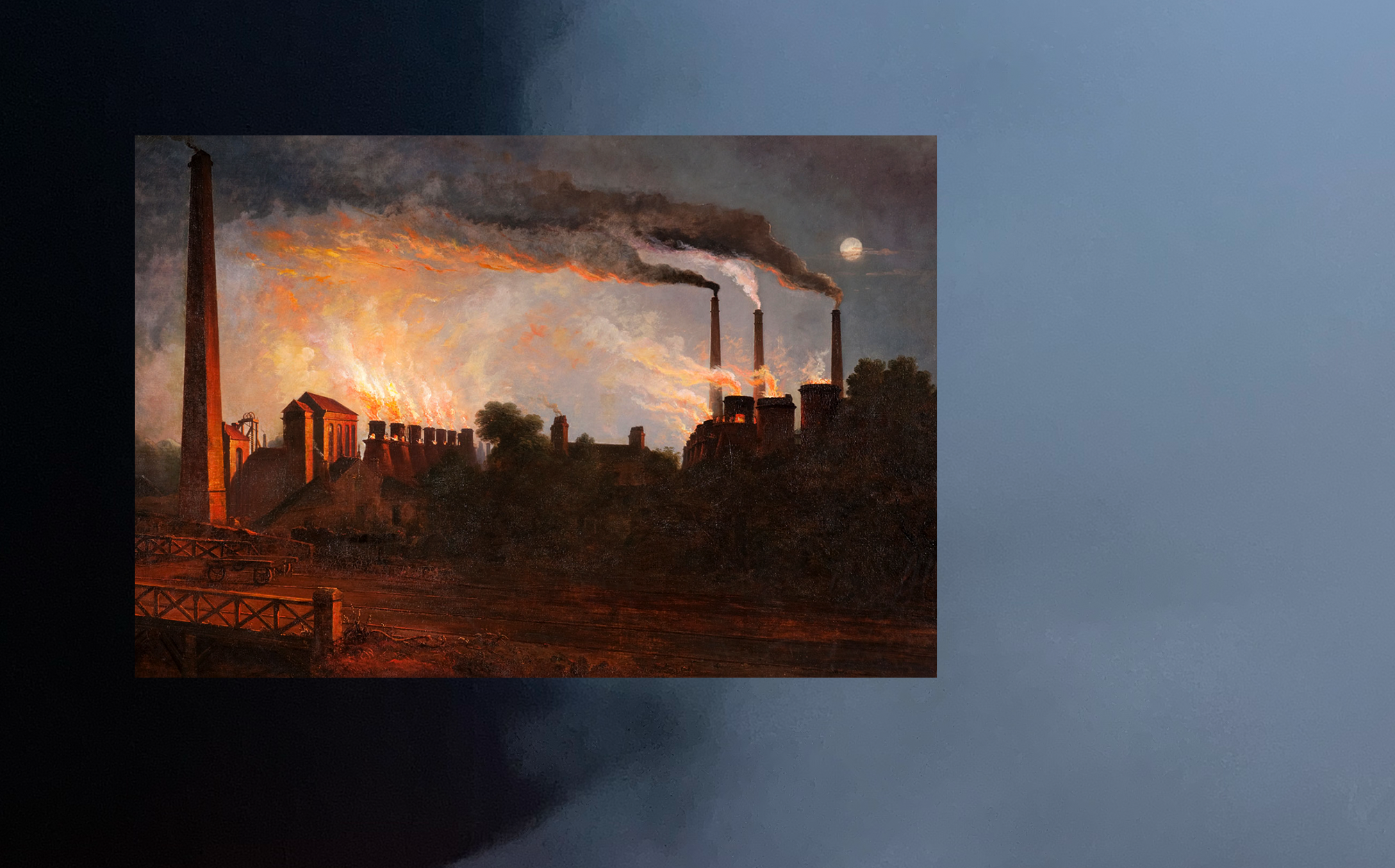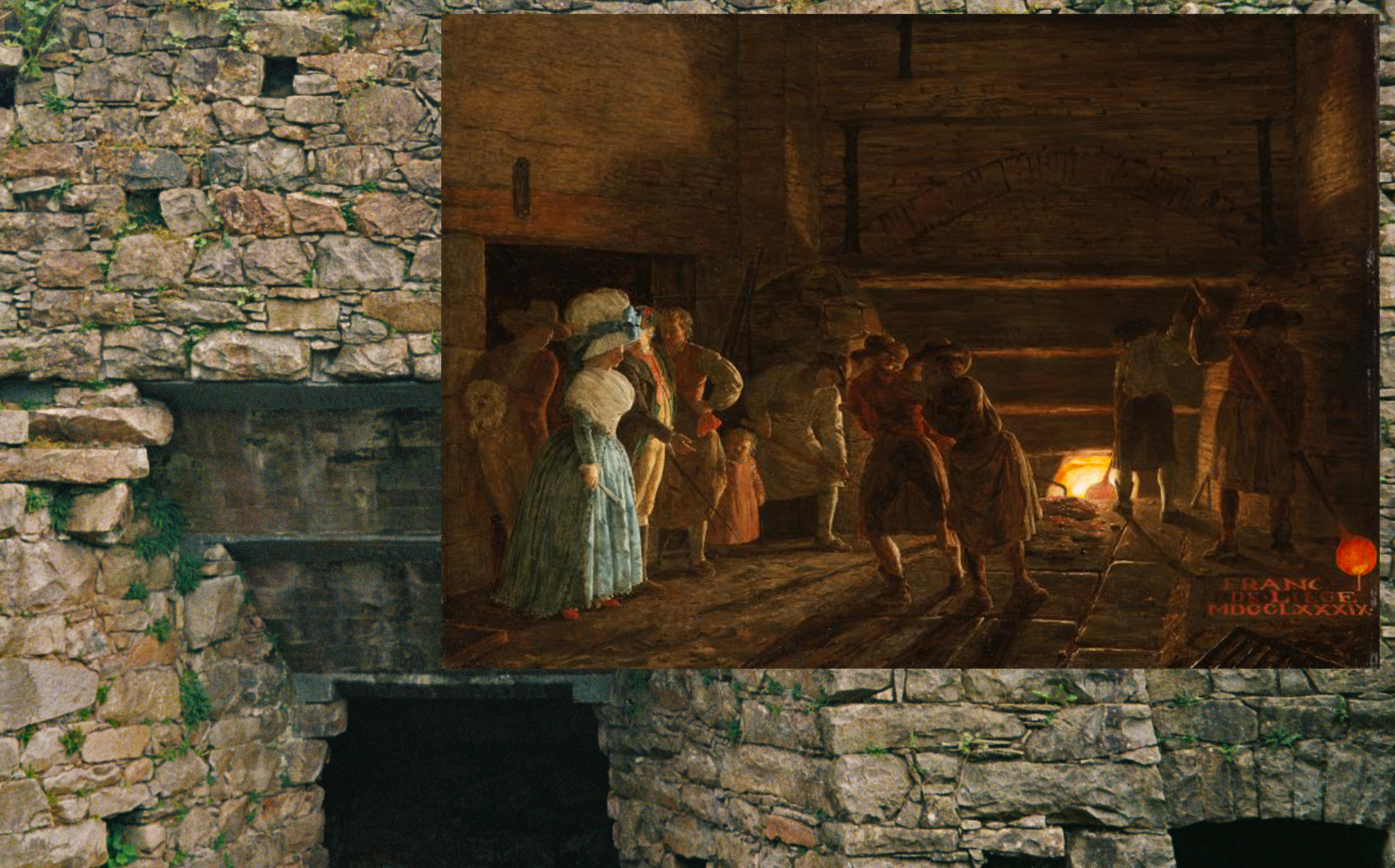Bonawe Iron Furnace was founded by Cumbrian-based business Richard Ford and Company (also known as Newland Co, George Knott & Co, Knott, Ainslie & Co, Harrison Ainslie & Co, Harrison Ainslie, Roper & Co, and finally as Harrison Ainslie & Co Ltd) in 1753.
Bonawe was Scotland's longest existing charcoal-fired blast furnace and the second last to close in Britain in 1876. The furnace remained in operation for roughly 123 years and ushered in a new age of industrialisation in the Scottish Highlands, forever changing the landscape and population of the area.
Images:
- Bonawe (2022)
- Bonawe (2022)
- Drawing of Bonawe Ironworks, ‘Lorne Furnace, Bonawe, Argyll; remains of the main complex’ (1975); Site plan of Bonawe Ironworks (1984); Bonawe external wall (2022)


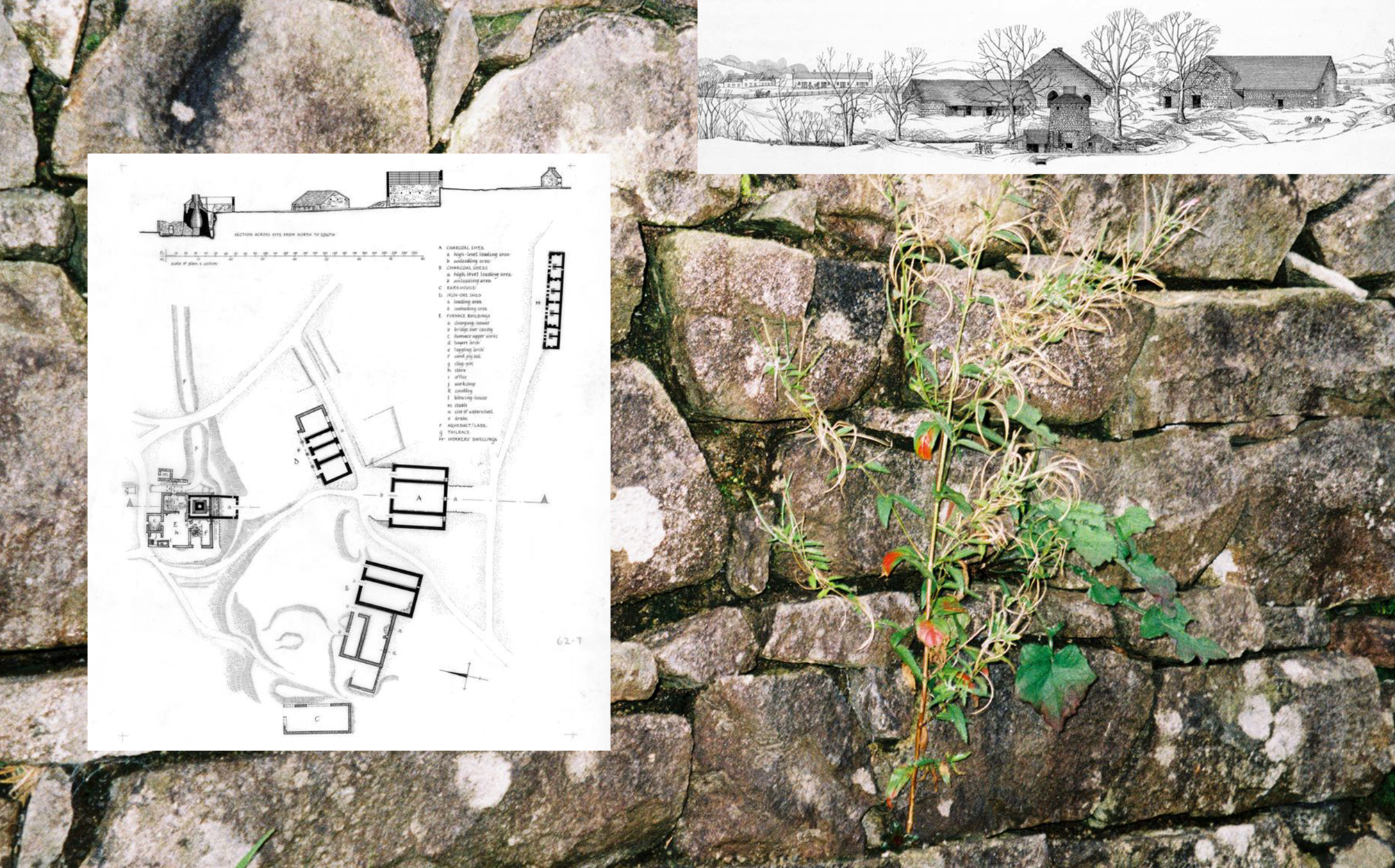
Bonawe_ examines the underrepresented industrial heritage of the Scottish Highlands, often disregarded in favour of romanticised images of the region that represent the landscape as wild, untouched and separate from Scotland’s industrial heritage. R.R. Mclan’s lithographs from Clans of the Scottish Highlands, produced in 1845 and dedicated to Queen Victoria, perpetuated these stereotypes through picturesque imagery connoting the simplicity of rural life.
Image:
-
R.R. McIan, The Clans of the Scottish Highlands (1845)

Bonawe Iron Furnace exploited the local forests for charcoal production to smelt iron ore brought into the site via Loch Etive from Lancashire and Cumberland. The site was chosen for its rich woodlands, proximity to the sea for transportation, and rivers to power the furnace.
Images:
- James Dorret, An Accurate Map of Scotland from all the Particular Surveys (1751), accessed via National Library of Scotland
- Argyllshire (1875), accessed via National Library of Scotland
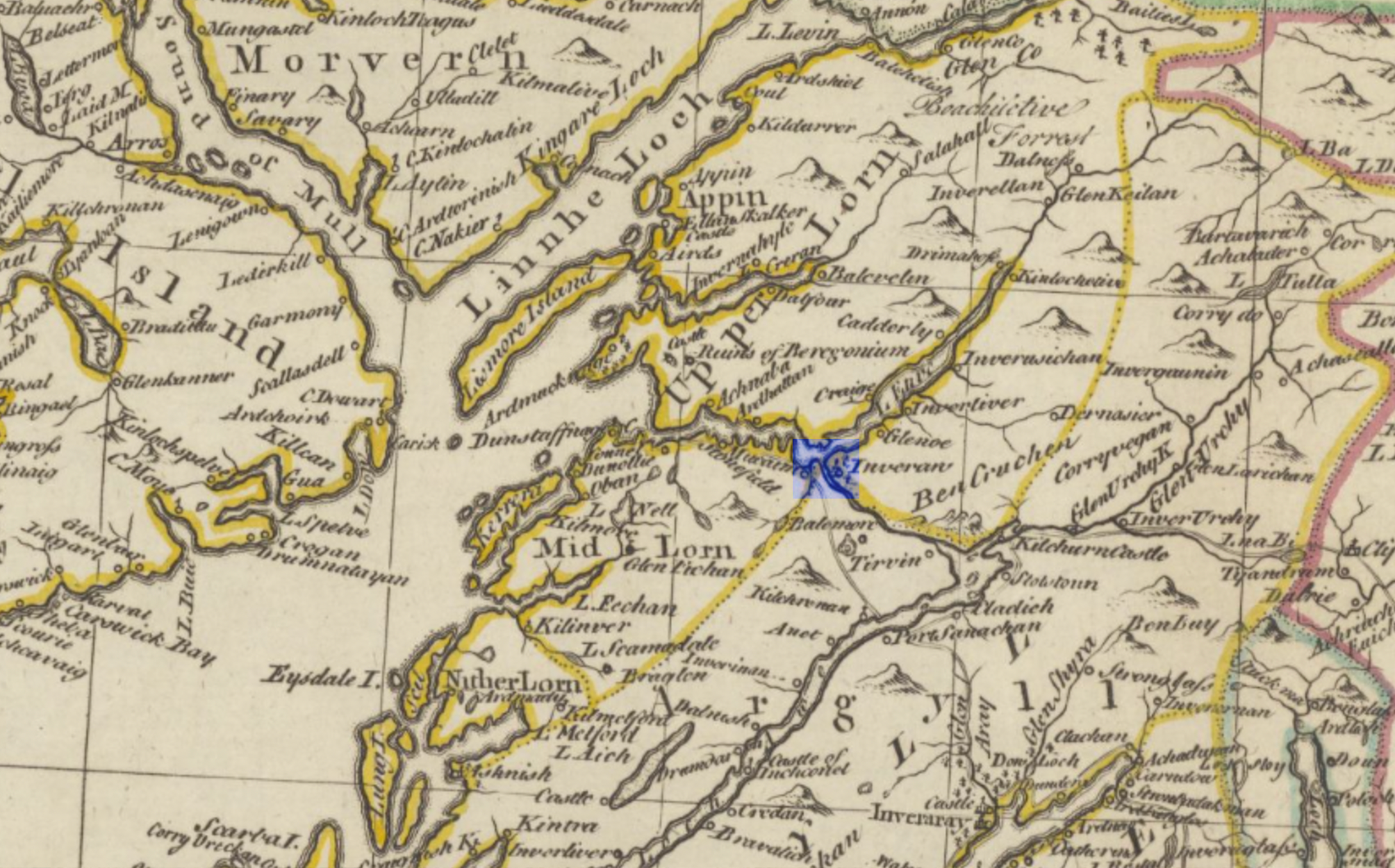

Richard Ford and Company concluded two agreements in 1752 with Sir Duncan Campbell of Lochnell, which determined the site for the ironworks and gave 110 year leases for wood rights in surrounding areas. A similar contract with the Earl of Breadalbane further ensured the all-important long-term supply of wood to fuel the furnace.
Images:
- Portraits of John Campbell, 3rd Earl of Breadalbane (1752-1782) by John Wootton (right), date unknown, and Jeremiah Davison (left), dated 1730
- The location of Lorn furnace. Reproduced from J.M. Lindsay, ‘The Iron Industry in the Highlands: Charcoal Blast Furnaces’, Scottish Historical Review (1977)

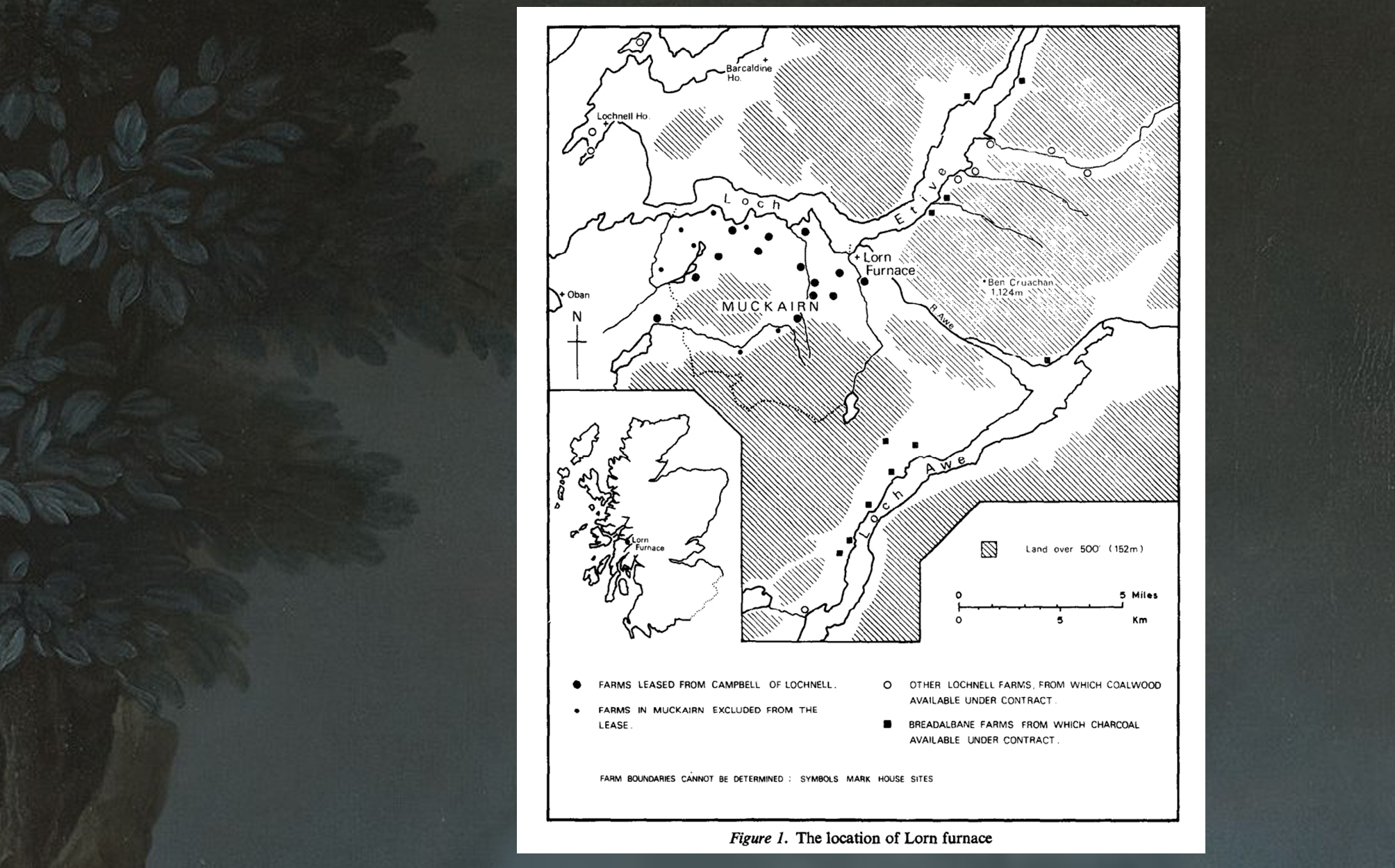
Demand for charcoal needed to feed the furnace shaped the population and landscape. One of the most powerful descriptions of the site has been passed down through oral history to Brigadier John MacFarlane (who is the last native speaker of Lorne Gaelic): ‘When the furnace started up, the local people used to say it was like hell on earth, because at night for the first time in living memory, the sky was red with light pollution from the furnace fires’.
Images:
- Caleb Robert Stanley, Gartsherrie by Night (1853); Charcoal Burn (2023)
- Léonard Defrance, Interior of a Foundry with Visitors 1789); Bonawe (2022)
